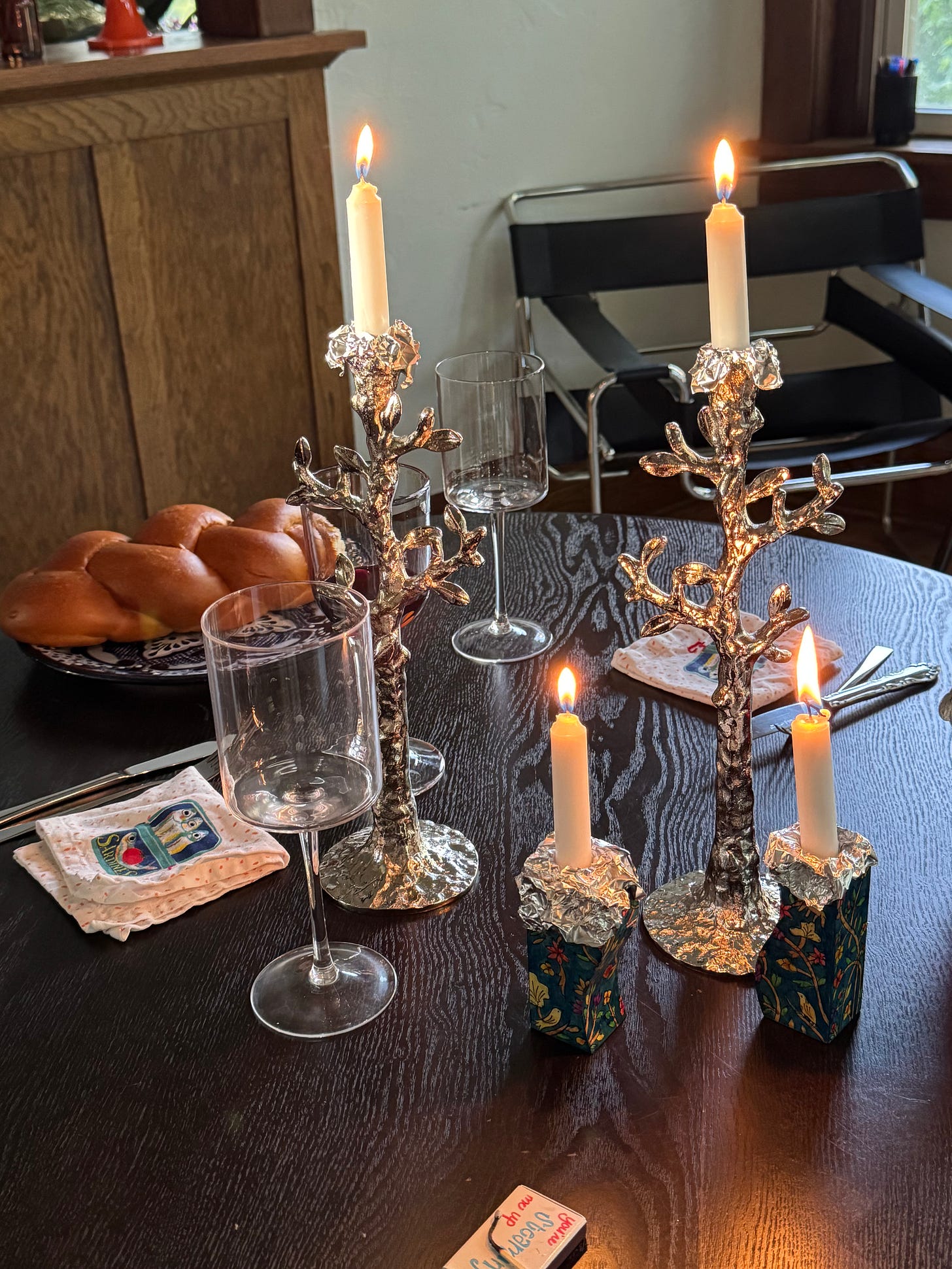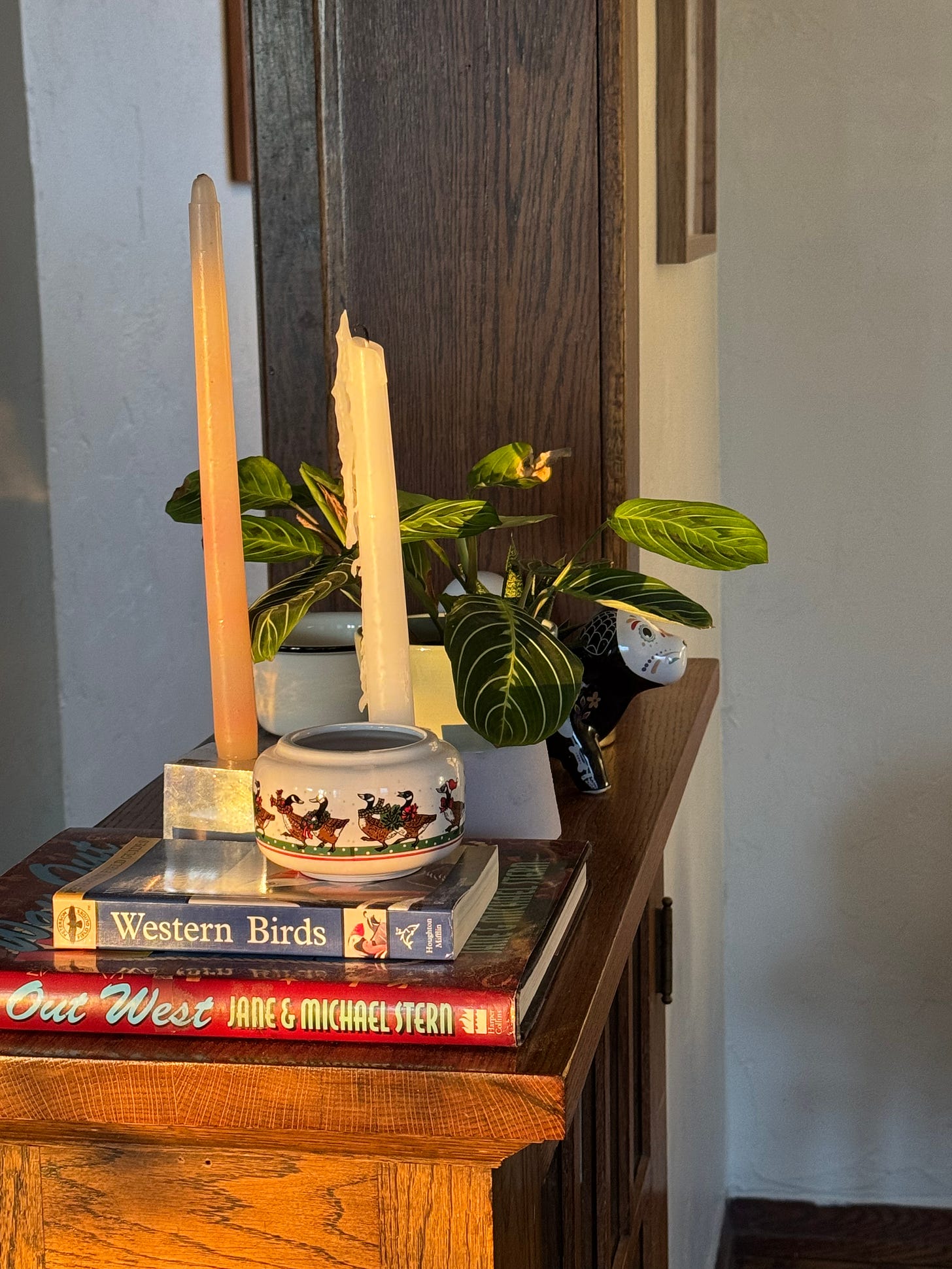Last week, I became bat mitzvah at the age of 31.
If you don’t know what a bat / bar / b’nai mitzvah is, it’s a Jewish coming-of-age ceremony, traditionally celebrated when a Jewish girl / boy / child turns 13. After months (or years) of study, the bat / bar / b’nai mitzvah is invited to lead the congregation in prayer and read from the Torah in Hebrew. This moment marks them as an adult in the eyes of the community, someone able to participate in all areas of Jewish community life.
Obviously, making the decision to reconnect to my Jewishness with 8 months of schooling and study to become bat mitzvah as an adult has brought up a lot. A lot to do with Jewishness, with heritage, with culture. Some of that I’ll save for later because, like any good bat mitzvah, what I really want to talk about today…are my gifts.
The first gift I received for becoming bat mitzvah, was a hand-me-down. My Papa’s tallit (prayer shawl), which in turn was a gift he received on my grandparents’ wedding day.
Another gift: a beautiful Star of David necklace.
And another: my very own set of Shabbat candlesticks.
To borrow a turn-of-phrase from early-2000s YouTube haul videos, “I’m not listing my bat mitzvah presents to brag”, but to illustrate that these gifts, given in the spirit of tradition and celebration, have a deeper meaning. They are, or will be, heirlooms.
I have a lot of stuff.
Not as much stuff as I could have, mind you. 4 international moves in 9 years will really highlight what you need and what you don’t, and most of my stuff, I’m proud to say, is somewhat ethically sourced. That’s because I get a real kick out of thrifting for homeware and am fundamentally someone who doesn’t like to spend more than $30 on a décor piece. But whether my trinket trays come from Goodwill or a local boutique is beside the point: they’re just things I have because I like them. It’s as simple as that.
I have a bowl for my match collection, a cowboy-shaped incense holder, a ceramic elephant from Thailand. I have a globe lamp with LED color-changing bulb, a wooden leprechaun, a Frank Llyod Wright Taschen coffee table book.
These are just a few of the things I can see as I sit on my couch and type this. I like all of these things. Some of them are gifts. Some of them are lucky dip finds from my local Little Free Library. Some of them bring up fond memories. But I’m not sure any of them are heirlooms.
It goes without saying that there’s a lot of needless consumption in culture at present. It happens on our phone screens, on our television screens, in our AirPods. And it most certainly happens in our Targets, our malls, our e-carts. I’ve written about our culture of consumption as a band-aid for uncomfortable feelings or insecurity before (and how creativity can be an act of resistance), and in this regard, needless consumption doesn’t require a price point, low or high – and needless is perhaps the wrong word to use. The issue is passivity.
This essay isn’t an admonishment of spending, and I don’t mean to imply that spending can’t be meaningful. There are purchases for special moments – and I believe and honor that moments big and small, achievements recognized externally or accomplished internally, should be celebrated. But if we’re talking heirloom, I think there’s more to it than “just because” plastic swiping.
We’re conditioned to believe that cost equals value, price point equals worth. An heirloom isn’t an heirloom because it was expensive. An heirloom is a physical manifestation of honor, be that in honor of culture, overcoming a challenge, or love.
The tallit? Honoring my lineage, and the stories that connect me to past generations.
The necklace? Honoring the months of dedication and study it took to accomplish a goal, one Jewish women in America have only been widely achieving since the 1970s.
The candlesticks? Honoring a lifetime of future Friday nights, through the traditions of our history.
If we aren’t sick of me waxing on about intentionality yet, this is what it means to be intentional with regards to spending: to think critically about why certain objects mean certain things.
The beauty of an heirloom is that its meaning or value can evolve, from person-to-person, generation-to-generation. When my mother was 17, her parents went to Paris and brought back a Louis Vuitton crossbody purse. The purse was a gift to my mother, but it’s an heirloom to me. It’s in my closet now, wrapped in its dust bag, not because I love the shape or the monogram or the vintage leather (okay, obviously, being real, I desperately love all of those things about this particular handbag), but because the story is deeply meaningful to me. I like to think about my grandparents in the 70s, staying in some beautiful hotel in the 7th arrondissement and sharing tarte tatin and loving everything about their life so much – both the travel and their children and home and life in LA – that when they go shopping and find a beautiful purse, they buy it for their teenage daughter and fly it home across the Atlantic and all of America. I love that someday (when I get the strap fixed), I can pass this bag down to my own daughter and she’ll know something of the love, joy, and celebration that is her inheritance, from stories about people she may only know through stories like this one.
The heirloom is not the object itself. It’s not the price tag. It’s not even the why it was purchased.
It’s the story behind it.
There’s a design term I think about a lot: planned obsolescence. Ever notice how your iPhone camera goes fuzzy after 2 years? That’s planned obsolescence, a design concept whereby failure is built into the product, requiring the purchaser to rebuy after a number of years.
In the eons before fast fashion, dupes, and Wayfair, purchasing necessitated more consideration, from selecting furniture that would last for generations to carefully choosing a wedding china pattern that reflected what aesthetic you value in your own household. There are very few purchases I make in 2025 that require that same kind of intentionality. I expect my tastes to change, or trends to evolve, or things to break. When it comes to buying, I worry I often self-plan obsolescence.
The things that have lasted me from my first solo apartment in college to my current space 10 years later, on the other hand, are the pieces that have meaning to me. An ashtray swiped from a Paris hotel. A set of Irish slate coasters. A faded accent rug. These things are not necessarily expensive. They’re not even thoughtfully purchased staple pieces (you know, like when you buy the Michael Stars plain white t-shirt instead of the H&M one? Higher quality, longer lasting? An investment).
Some of these things have a memory or a story, some of them don’t, but they are all things I love. And I can only imagine that by filling my home and my life with elements I love – be that in my closet, in my kitchen, in my relationships, on my bookshelves – I am curating a lifetime of heirlooms. A lifetime of objects that are the manifestation of love. That’s worth honoring in and of itself.
If you enjoyed this, maybe you’d like to…
FOLLOW me on Instagram
LISTEN to my bookish podcast, BROKEN SPINE SOCIAL CLUB
EXPLORE your options for bespoke brand messaging strategy and content management with my agency, PASTE COPY & CONTENT







I love this! And you!